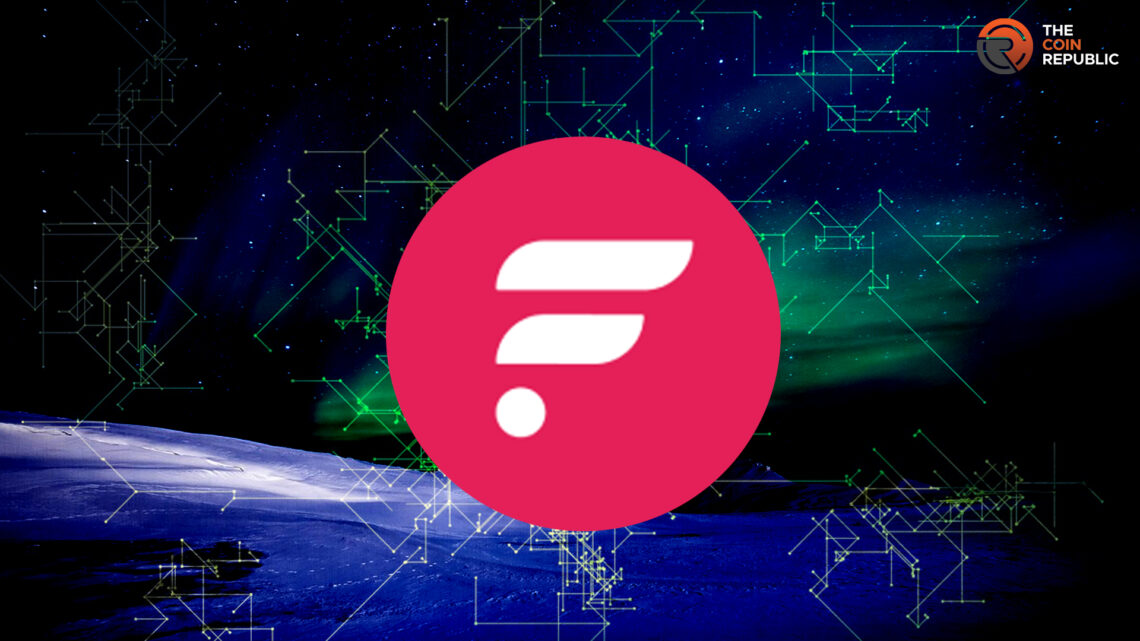- 1 Flare network is driving the path of bringing blockchain for more practical everyday uses.
- 2 Its focus lies on interoperability between cross-chain data, on-chain, and off-chain data, and procuring data from Web 2 APIs.
- 3 It uses advanced mechanisms to develop dApps on the network that have scalable real-world functionalities.
Flare is an emerging blockchain network with an innovative consensus protocol for off-chain data and interoperability of multiple blockchains. Its focus is secure and efficient cross-chain communication to build dApps on its network that have real-world utility of the blockchain, beyond the world of digital assets.
What is new with the FLare Network?
Crypto enthusiasts are constantly engaged in looking for scaling solutions to the existing blockchains to drive expansion for the industry. Numerous dApps have emerged on various networks. However, most of these dApps focus solely on the digital assets domain, with limited exploration of blockchain’s potential for real-world applications. Moreover, people do not often look at solutions blockchain brings for real-world applications and ways to make it feasible.
It starts with massively increasing the functionality of dApps, as dApps will be at the core of it all. Flare has taken the initiative with its newly designed program that facilitates the development of decentralized applications on the Flare network.
The novelty in the design of these dApps will be their cross-chain interoperability, communication building between on-chain and off-chain data, and data mobility between Web3 and Web2 applications. Another exciting feature is that it will conjoin smart contract functionalities in the blockchains that currently do not have them, such as Bitcoin and XRP Ledger.
Flare is a Layer 1 blockchain that uses smart contract functionality to promote operations on-chain and off-chain. It is EVM-compatible (Ethereum Virtual Machine) and secures oracles on the network. Oracles are the means to connect a blockchain to external data.
Decentralized Oracle Networks (DONs) like Flare are the key to combining on-chain code and off-chain configuration. They do so by enabling the creation of hybrid smart contracts that enhance the scope of dApps.
How does the Flare blockchain network work?
Notably, the network uses a highly advanced version of the Proof-of-Stake consensus mechanism. It adopts an asynchronous ordered Federated Byzantine Agreement, which means that the validators give consensus to a random collection of other validators simultaneously without staking any assets. It expands the scope of transactions that the network can handle, along with an added security measure as it is asynchronous.
The core of the network is governed chiefly by 2 protocols —
- The State Connector: This protocol helps attain secure interoperability between two blockchains. It does so by verifying information requests and then obtaining data in a cryptographic method of Merkle Tree, after which all the validators verify the data provided. Then, it is processed and recreated for use in Flare’s native dApps.
- Flare Time Series Oracle: This protocol helps gather off-chain data and is the key to communicating the data between blockchain and Web2 APIs (Application Programming Interface). It is achieved using natively produced oracles. It has a secure mechanism to procure the most accurate data possible.
The native token of the network is FLR. It is used for transaction fees on the platform, staking, and as collateral for lending, trading, and other activities on the third-party dApps. It is also used to participate in Flare’s governance as the token yields rewards and gives community voting rights.
Steering Web3 for everyone
The founder and CEO of Flare network, Hugo Philion, has quoted, highlighting the motto of the company — “We need more useful decentralized applications. Flare is tackling this through data, not just prices but transaction details, Web2 events, etc, so that developers can build applications that provide more utility to a larger group of users.”
Flare has developed advanced Proof-of-Stake (PoS) mechanisms and highly efficient protocols with the smart contract functionality to give a welcome sight to a host of developers whose primary domain, up until now, has been Web 2. The network’s interoperability, effective oracle tooling, secure and accurate data acquisition technique, and validation through attestors’ agreement work to leverage Web2 applications to be composed within Web3.
It might become the most extensive network to leverage blockchain technology into the lives of a larger group of people by achieving real-world utility and getting Web3 applications to be able to substitute Web2 apps.

Nancy J. Allen is a crypto enthusiast, with a major in macroeconomics and minor in business statistics. She believes that cryptocurrencies inspire people to be their own banks, and step aside from traditional monetary exchange systems. She is also intrigued by blockchain technology and its functioning. She frequently researches, and posts content on the top altcoins, their theoretical working principles and technical price predictions.


 Home
Home News
News






